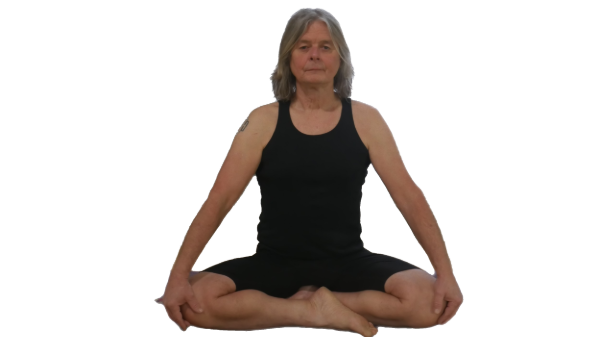WHAT IS PRANAYAMA?
The word pranayama is often defined in various ways, and is sometimes made up of either:
- prana and yama
- prana and ayama
Yama can be translated as “restraint” or “control”, as in the first 2 limbs of Patanjali’s 8 limbs of yoga the Yamas and Niyamas. The Yamas and Niyamas discuss moral and ethical codes which we should consider in all our actions.
Ayama is a Sanskrit word that can mean extension, stretching and lengthening.
The breath is symbolic of prana, and pranayama can therefore be understood as methods to extend and expand vital life force energy through the deliberate control of respiration.
VEDIC EVIDENCE
The early Vedic text the Atharvaveda, states that prana is “the fundamental basis of whatever is, was, and will be.” Other texts also translate prana, as the “life force” or “vital energy”.

Pranayama can therefore be defined as,
“extension of life force through restraint of the breath.”
Hatha Yoga Pradipika 26 (10 chapters) For success, one should inhale, retain and exhale in a very judicious manner
GODDESS/GOD ASUNITI
Asu is a term that means the vital air, or the existence of which brings life to beings, and eventually its departure makes one dead.
Nīti is a Sanskrit word and can mean, directing and guiding.
Asunīti is the symbolic deity mentioned in the Rigveda and the Atharvaveda who guides and directs lifeforce.
LIFE FORCE IN THE OLD TESTAMENT
In the Old Testament the term Ruach HaKodesh can be translated as wind, spirit or breath.
Spirit, or the Holy Spirit appears many times in the Tankah and is expressed as breath, wind, force and power.
Yahweh is an old name for God, and it is Yahweh who is said to initiate life through his breath.
“He is Yahweh’s spirit which is Omni Present, but can also be directed in specific ways for specific purposes”
“His spirit can be said to be the emanation of his life force – or breath”
THE BREATH AS SPIRIT AND SOUL
The breath as life force is expressed throughout history in many ways.
Pneuma is the archaic Greek word for breath, air in motion and wind. In Greek translations of Ruach from the Hebrew Bible it means Spirit or soul.
BREATH AS THE ESSENCE OF LIFE
Christians mainly view the Holy Spirit as one third of the Trinity, made up of God the Father, God the Son and God the Holy Ghost.
“This breath is the essence of life” (Job 12:10), and without it is death. And all life is derived from one source, which is God. Thus, life and death are dependent upon the presence of the divine breath, as in Job 34:14:”
PRANA AS LIFE FORCE
It is clear that Prana, or life force, or holy spirit is embedded through all cultures and is evidenced in many ways.
PRANAYAMA AS KUMBHAKA
Kumbhaka is breath retention and is discussed at length in the Hatha Yoga Pradipika and the Yoga Sutras of Patanjali. Although the Sutras and the HYP differ in how it may be achieved, they both agree that ultimately Kumbhaka is pranayama.
THE HATHA YOGA PRADIPIKA AND KUMBHAKA
The HYP divides pranayama in these various phases:
- Puraka-inhalation
- Rechaka-exhalation
- Kumbhaka-breath retention
- Puraka and Rechaka are defined as natural phases and determines that Kumbhaka is therefore Pranayama.
Kumbhaka is then divided into three further phases of:
- Bahir-which is retention at the end of a breath
- Antar-which is retaining the breath on an inhalation
- Kevala Kumbhaka-is holding the breath with no particular emphasis
TWO KINDS OF KUMBHAKA
- Sahita Kumbhaka is retention which is a conscious practice and requires controlled effort.
- Kevala Kumbhaka is spontaneous unconscious retention and occurs naturally.


THE YOGA SUTRAS ON PRANAYAMA
The Yoga Philosophy of Patanjali Sutra 2.49
That (Asana) Having Been Perfected, Regulation of The Flow of Inhalation And Exhalation Is Pranayama (Breath Control)
COMMENTARY ON SUTRA 2.49
Asana having been perfected, suspension of either of the processes of drawing in external air and exhaling internal air constitutes a Pranayama*
The Yoga Sutras on pranayama.
“If the air is not expelled after inhalation, there is a cessation of the movement of breath; this is one Pranayama. Similarly, if after expulsion of air, the movement of breath is suspended, that also is a Pranayama. It is the suspension of breath, following either inhalation or exhalation, that constitutes a Pranayama. Pranayama’s have thus to be practiced one after another.
Whereas the Hatha Yoga Pradipika provides phases as discussed above the Yoga Sutras is less specific. It discusses pranayama in terms of the cessation of breath.
The Yoga Philosophy of Patanjali
“The special feature of this practice is to arrive at a unification of exhalation and retention so that the two can be achieved in the same process, and no separate effort has to be made for each. At the time of exhalation, the entire volume of internal air need not be ejected. When some air remains, the exhalation should be reduced and passed on to retention.”
It is a far more subtle form of pranayama which becomes effortless and quite natural.
TANTRIC & SUTRIC PHILOSOPHY
The Hatha Yoga Pradipika is a Tantric text which provides techniques such as asana, pranayama and bandhas to prepare the body and mind to study and practice yoga as described in the Yoga Sutras.
My understanding is that the practice of pranayama (breathing exercises) such as Samaveta are the effort required in order to experience the type of pranayama that is discussed in the Yoga Sutras.
WHAT IS PRANAYAMA? AT YOGA DHARMA
MORE COURSES AT YOGA DHARMA
CONTACT MARTIN
- 00447787357306
- 00359876102654
- askyogadharma@protonmail.com
- Yoga Alliance International approved


